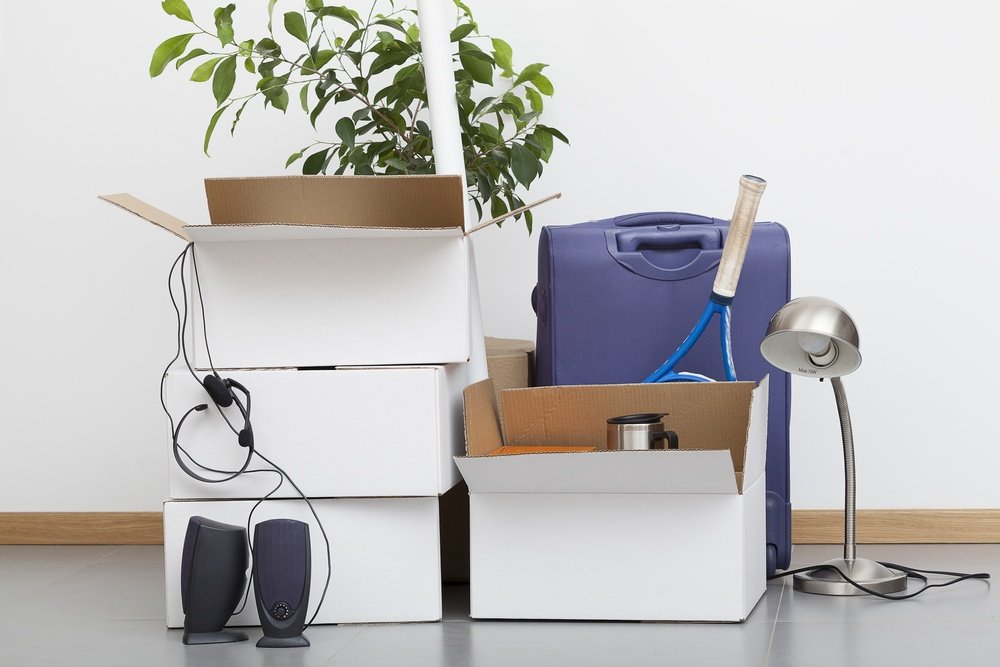How to make the move & downsize your house into a tiny home

Following on from our 'Big Buzz around Tiny Homes' blog featured a few weeks ago there have been a lot of people making the big transition to small home living. Over the years we carry a lot of clutter and almost 80% of the things we items we keep are never used. It goes even further, 25% of people have 2 car garages that cannot fit a single vehicle inside, purely because they're filled with too much stuff! All of this outlines a problem with how we look at the things we own. Instead of regularly re-evaluating the necessity of items in our homes we keep them, often 'just in case'.
If you are a natural minimalist this article probably isn't for you. But if you have drawers full of items you've never used, a box of old batteries or a garage that's purely used for storage then you may want to stick around.
Choosing what to throw away and what to keep can be a daunting experience. That is why we have put together our top tips to help you through the move and make it as stress-free as possible.
How do I begin to declutter?
To start the process we suggest getting 3 colours of post-it notes, you can get some here. One colour labeled 'Keep it', one 'bin it' and the other 'undecided'. 'Keep it' items should be items that are important and cannot be replaced. Family photos, important documents, and things you require for your work. 'Bin it' are no-brainer items, this could be expired flour that's been sitting in your pantry for over a year, or items of clothing that haven't seen the light of day for a few seasons at a time.'Bin it' doesn't have to mean it goes to landfill. Clothes, books, ornaments, gym equipment can easily go to your local charity shop and find a new home. Likewise you could choose to sell unwanted items on TradeMe to generate a bit of cash. 'Undecided' is rather self-explanatory, these items can be the last items that you go through and can sometimes be the hardest to dispose of. To help you decide what should be keep or binned use the following:
If it's not useful or meaningful 'bin it':
Start off by parting with items that have no meaning. This will help start the decluttering process. Clothes and kitchen utensils for example can be the biggest ‘keep’ item that can sit and collect dust. If you haven’t worn it or used it in the past 2 seasons donate it to charity or sell it online.
Wants v Needs:
To help you decide what to keep. Think about what are your wants vs your needs.
For example, you may want to get fit and the unused skipping rope, or cycling machine may be your ticket to achieving your goal. But if you haven't used it in a couple of years why not sell it and use the money on gym membership instead? You don't need a skipping rope or cycle machine to get fit.
The same goes with old plates, clothes and one-off items. You may want to keep your old plates, pots and cutlery, but do you need to when you prefer other items on a day-to-day basis?
Maximise your space.
Our previous blog 'how to style a transportable home' has some great examples of how to make the most of your space even if you live in a tiny home. You may even decide to use some of these tips to make your larger home more spacious!
If all of this seems a little too stressful and overwhelming, or you can't decide where to start then try the 'trash can tango'. Peter Walsh who is a organisation guru suggests using this technique that will help you slowly eat away at it, and this is how it goes.
1. You get two trash bags, with the idea being to clear the superficial clutter from your home.
2. In the first one you put trash; in the second bag, you put stuff that’s going to a charity or a yard sale, books that you’ve read or clothing that no longer fits you,—and anything else that you just want out of the house. Then, on your next trip into town, you take these items to their next home.
If you do this simple 10-minute routine every day for a week you’ll notice a difference. Do it every day for two weeks and everyone will notice a difference. And do it every day for a month and you’ll really be on top of the clutter.
You don't need to have a massive lifestyle change to achieve a home with less clutter. And even though it may take a little bit of effort to reduce the volume of items that have accumulated over the years there can be serious benefits to doing so.
You could:
- Free up space
- Earn some extra money
- Find useful items you thought you'd lost!
- Be in a position to down-size your home
The last point can free-up even more cash with lower rent, or by allowing you to get on the property ladder with an affordable transportable home.
Article Tags
Next Article:
Boomerang kids: Coping when the kids move back in.Start Your HouseMe Journey Here
Talk to one of our friendly team, book a callback, or download our brochure, we look forward to hearing from you!